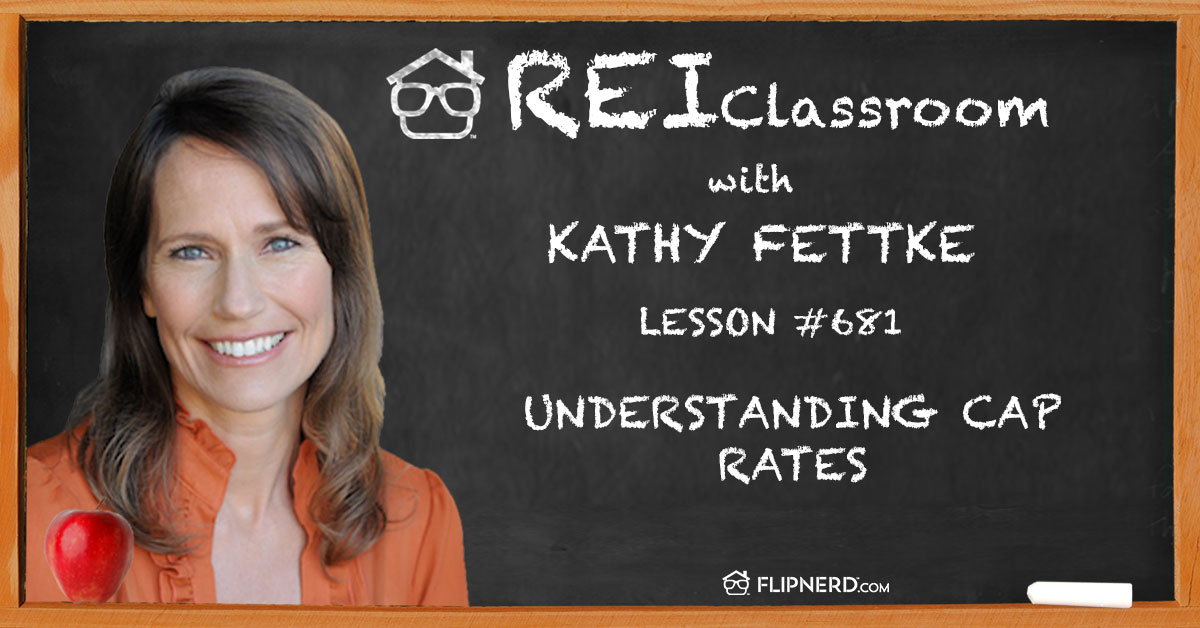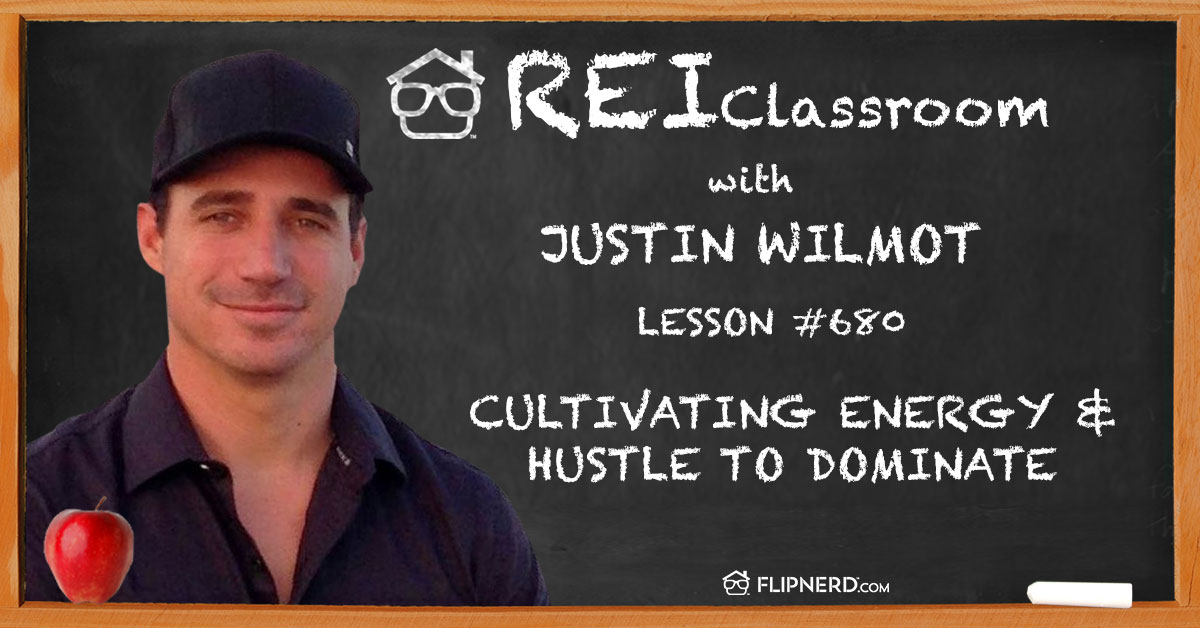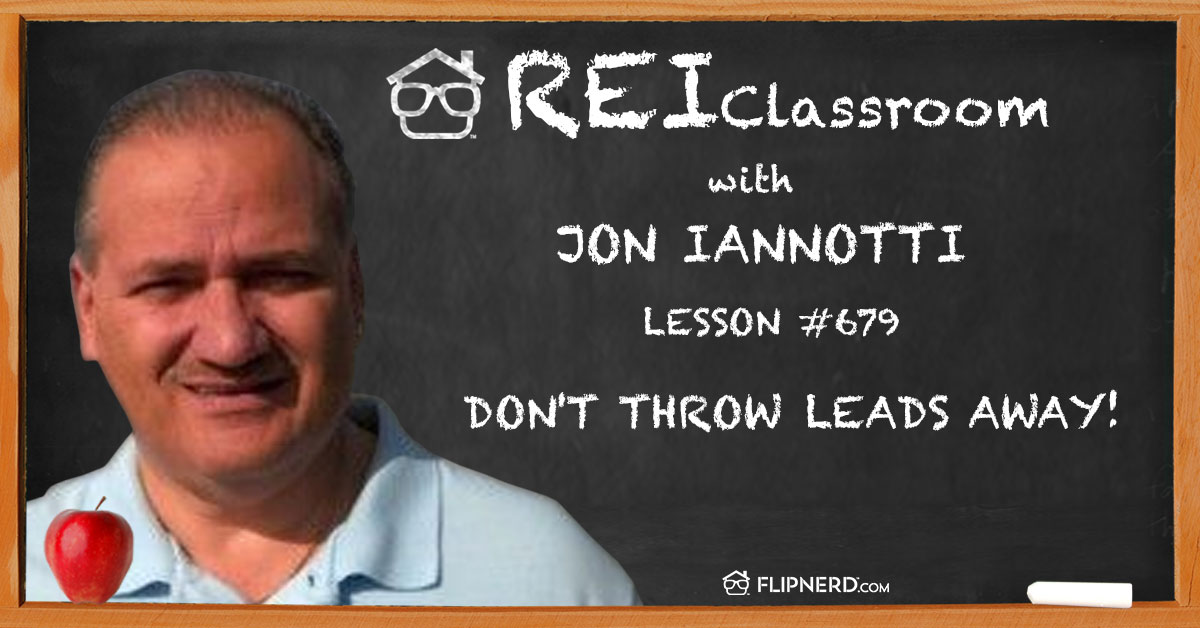Today’s REI Classroom Lesson
Lex Levinrad elaborates on the benefits of purchasing the home and then renting it out.
REI Classroom Summary
Learn more about how buying the right property, finding a good tenant, fixing it up, and eventually refinancing it can bring in sizeable profit with little to no funds.
Listen to this REI Classroom Lesson
Real Estate Investing Classroom Show Transcripts:
Mike: Welcome back to the FlipNerd.com REI Classroom, where experts from across the real estate investing industry teach you quick lessons to take your business to the next level. And now, let’s meet today’s expert host.
Lex: Hi, everyone. This is Lex Levinrad, founder of the Distressed Real Estate Institute, with another REI Classroom lesson for you. In this one, we’re going to be talking about landlording, and buying and holding real estate for the long-term.
Mike: This REI Classroom real estate lesson is sponsored by UglyOpportunities.com.
Lex: Okay. And it’s often said, the guy who taught me real estate said the money is made in the sitting, and Donald Trump always says the money is made when you buy. So definitely you need to know how to but at the right price point.
You should only buy properties that you’re getting instant equity when you buy them, meaning if probably it’s worth, let’s say, $100,000 fixed up, you shouldn’t be paying more typically than $70,000 or $80,000 to buy that property, if it’s in immaculate condition. So you shouldn’t have equity when you close.
What I want to do is touch on a little something over here. A lot of people don’t realize how much real estate can go up when you’re looking over the long-term. For those of you that are on today’s training, some of you might have a lot of cash saved up, but some of you might not.
But what you don’t realize is that many of you have a hidden potential that you’re not tapping into. And that is, if you have a good job, if you have a decent job, a steady job, if your credit’s at least 620 plus, you can buy a property with a private loan, and then rent it out and fix it up, and refinance it. And this is a great strategy if you’re a little lower on cash, but you have really, really good credit.
And the reason I like this strategy so much is because, first of all it’s what I did when I started out, and, secondly, a lot of people can avail themselves to it that might not necessarily be able to go into another type of transaction. So remember somewhere down the road, you might not have that job anymore, or you could get laid off, or something could happen, you could choose to become self-employed, and you won’t have that paycheck stub, and that credit score, necessarily, to avail yourself of the strategy.
So the way it works is like this. Let’s say you find a house that’s worth $100,000 fixed up, in a decent neighborhood, that would make a good rental. And let’s say that the house needs about $5,000, not much to be rent ready, just some basic paint, and carpet, and fixing a few things. So let’s say, at most, $5,000 worth of repairs. And let’s just assume that you’re able to go out there and you’re able to buy this house for $65,000. So significant discount to what the house would really be worth once it’s fixed up.
Let’s say you could come to a lender like me, as an example, and say, “Listen, Lex. I’m buying this house for $65,000. I’d like to put $5,000 down. Can you loan me 60? And my goal is to fix it up, put a tenant in place, and then refinance and pay you back.” Let’s say I said, “Yes.” And I have many example of that with existing students of mine using those exact numbers.
So the mechanics of the deal would work like this. You would buy the house for 65, you’d put 5,000 down, so you’d be out of pocket, $5,000. Now you would go ahead and you’d clean up the house, let’s say, 3 to $5,000 just to clean it up, put some carpet and paint, get it rent-ready. The minute you advertise that house for rent, let’s say the house rents for 1,200 a month, you should typically be able to get first month’s rent plus security deposit, which would be $2,400, back. So far you’re at 10, plus 2,400 back, you’re out about $7,500.
Now that you have the tenants in place, and the property, you wait six months for something called seasoning of title, and then you refinance the property. Now, if your numbers and your assessment is originally correct, and the house is indeed worth $100,000, then the banks should have no problem giving you an 80% loan, meaning $80,000. And when they give you that $80,000 loan, even if your fees are $5,000 in loan fees, you should still net 75, which is more than enough to pay off the 60,000 loan to me, and will leave you now with 15,000 in your pocket.
If you only spend 7,500 out of your pockets to get into this deal, you essentially just got yourself into a rental with no money down. So the only obstacle for you getting that whole transaction put together is having that 7,500 to begin with. And my suggestion is if you don’t have it, borrow it or find somebody to partner with you on the deal.
So if you have good credit, focus on that strategy. Remember that money is made in the sitting. We have properties, myself, my students, that we’ve purchased for as little as 40, $50,000, just four or five years ago, that today is worth $150,000. So imagine if you buy 3, 4, 5, 10 houses like that, how much that can add up.
So just remember that the best advice I can always give, and I always give to all my students is, number one, if you rent, make sure you buy your own home, even if it’s a little bit not as nice as the current rental that you have. And the second suggestion is, make sure you buy just at least one rental property.
That ends off today’s REI Classroom tip. If you’d like to learn more about me, my name is Lex Levinrad. You can visit me at my website, www.lexlevinrad.com.
Please note, the views and opinions expressed by the individuals in this program do not necessarily reflect those of FlipNerd.com or any of its partners, advertisers, or affiliates. Please consult professionals before making any investment or tax decisions, as real estate investing can be risky.
Are you a member yet of FlipNerd.com, the hottest real estate investing social community online? If not, you can join for free in less than 30 seconds and get access to hundreds of off-market deals, vendors in your market to help you in your business, and you can start networking with thousands of other investors just like you. Get your free account now at FlipNerd.com.
Please check out the FlipNerd family of real estate investing shows, where you can access hundreds of expert interviews, quick tips, and lessons from leaders across the real estate investing industry. They’re available at FlipNerd.com/shows, or simply search for FlipNerd in the iTunes store.
Lex: Hi, everyone. This is Lex Levinrad, founder of the Distressed Real Estate Institute, with another REI Classroom lesson for you. In this one, we’re going to be talking about landlording, and buying and holding real estate for the long-term.
Mike: This REI Classroom real estate lesson is sponsored by UglyOpportunities.com.
Lex: Okay. And it’s often said, the guy who taught me real estate said the money is made in the sitting, and Donald Trump always says the money is made when you buy. So definitely you need to know how to but at the right price point.
You should only buy properties that you’re getting instant equity when you buy them, meaning if probably it’s worth, let’s say, $100,000 fixed up, you shouldn’t be paying more typically than $70,000 or $80,000 to buy that property, if it’s in immaculate condition. So you shouldn’t have equity when you close.
What I want to do is touch on a little something over here. A lot of people don’t realize how much real estate can go up when you’re looking over the long-term. For those of you that are on today’s training, some of you might have a lot of cash saved up, but some of you might not.
But what you don’t realize is that many of you have a hidden potential that you’re not tapping into. And that is, if you have a good job, if you have a decent job, a steady job, if your credit’s at least 620 plus, you can buy a property with a private loan, and then rent it out and fix it up, and refinance it. And this is a great strategy if you’re a little lower on cash, but you have really, really good credit.
And the reason I like this strategy so much is because, first of all it’s what I did when I started out, and, secondly, a lot of people can avail themselves to it that might not necessarily be able to go into another type of transaction. So remember somewhere down the road, you might not have that job anymore, or you could get laid off, or something could happen, you could choose to become self-employed, and you won’t have that paycheck stub, and that credit score, necessarily, to avail yourself of the strategy.
So the way it works is like this. Let’s say you find a house that’s worth $100,000 fixed up, in a decent neighborhood, that would make a good rental. And let’s say that the house needs about $5,000, not much to be rent ready, just some basic paint, and carpet, and fixing a few things. So let’s say, at most, $5,000 worth of repairs. And let’s just assume that you’re able to go out there and you’re able to buy this house for $65,000. So significant discount to what the house would really be worth once it’s fixed up.
Let’s say you could come to a lender like me, as an example, and say, “Listen, Lex. I’m buying this house for $65,000. I’d like to put $5,000 down. Can you loan me 60? And my goal is to fix it up, put a tenant in place, and then refinance and pay you back.” Let’s say I said, “Yes.” And I have many example of that with existing students of mine using those exact numbers.
So the mechanics of the deal would work like this. You would buy the house for 65, you’d put 5,000 down, so you’d be out of pocket, $5,000. Now you would go ahead and you’d clean up the house, let’s say, 3 to $5,000 just to clean it up, put some carpet and paint, get it rent-ready. The minute you advertise that house for rent, let’s say the house rents for 1,200 a month, you should typically be able to get first month’s rent plus security deposit, which would be $2,400, back. So far you’re at 10, plus 2,400 back, you’re out about $7,500.
Now that you have the tenants in place, and the property, you wait six months for something called seasoning of title, and then you refinance the property. Now, if your numbers and your assessment is originally correct, and the house is indeed worth $100,000, then the banks should have no problem giving you an 80% loan, meaning $80,000. And when they give you that $80,000 loan, even if your fees are $5,000 in loan fees, you should still net 75, which is more than enough to pay off the 60,000 loan to me, and will leave you now with 15,000 in your pocket.
If you only spend 7,500 out of your pockets to get into this deal, you essentially just got yourself into a rental with no money down. So the only obstacle for you getting that whole transaction put together is having that 7,500 to begin with. And my suggestion is if you don’t have it, borrow it or find somebody to partner with you on the deal.
So if you have good credit, focus on that strategy. Remember that money is made in the sitting. We have properties, myself, my students, that we’ve purchased for as little as 40, $50,000, just four or five years ago, that today is worth $150,000. So imagine if you buy 3, 4, 5, 10 houses like that, how much that can add up.
So just remember that the best advice I can always give, and I always give to all my students is, number one, if you rent, make sure you buy your own home, even if it’s a little bit not as nice as the current rental that you have. And the second suggestion is, make sure you buy just at least one rental property.
That ends off today’s REI Classroom tip. If you’d like to learn more about me, my name is Lex Levinrad. You can visit me at my website, www.lexlevinrad.com.
Please note, the views and opinions expressed by the individuals in this program do not necessarily reflect those of FlipNerd.com or any of its partners, advertisers, or affiliates. Please consult professionals before making any investment or tax decisions, as real estate investing can be risky.
Are you a member yet of FlipNerd.com, the hottest real estate investing social community online? If not, you can join for free in less than 30 seconds and get access to hundreds of off-market deals, vendors in your market to help you in your business, and you can start networking with thousands of other investors just like you. Get your free account now at FlipNerd.com.
Please check out the FlipNerd family of real estate investing shows, where you can access hundreds of expert interviews, quick tips, and lessons from leaders across the real estate investing industry. They’re available at FlipNerd.com/shows, or simply search for FlipNerd in the iTunes store.










